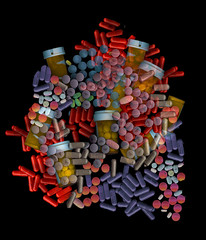So you want a sixpack of abs? Well, if you have muscles under there, all you need to do is strip off that layer of fat. Obviously diet plays a big part in getting a six pack. Well if you need some tips on getting a six pack I found the right guy for you. Jamin Thompson of http://perfectbodyrx.com, author of the Six Pack Secret, has really great articles about how you can get some. (side note, you should check out Jamin’s abs, he’s ripped and was a former skinny guy too. ) Here’s just part of a huge post he did.
========
Note: The most important part of building six pack abs is nutrition. Unfortunately this critical aspect is often the most overlooked aspect by many lifters. The fact is, you can never work harder than your bad diet is working against you.
Here are some basic six pack abs “best practices” to keep in mind:
1. Cycle your carbs. For example, have a High Carb Day, followed by two medium carb days, and one no carb day and continue that cycle for 30 days until you notice fat loss. My complete carb cycling strategy is outlined in my 6 Pack Secret Program Manual.
 2. Add a complete source of high quality protein to each meal (lean steak, bison, chicken, fish, egg whites, whey protein, etc)
2. Add a complete source of high quality protein to each meal (lean steak, bison, chicken, fish, egg whites, whey protein, etc)
3. Eliminate virtually all saturated fats and incorporate healthy fats into your diet such as ( nuts and nut butters, seeds, flax oil, Udo’s, etc). Believe it or not but these essential fats actually help you burn more fat.
4. Choose only complex carbs such as yams, oatmeal, brown rice and whole grains. You may taper your carbs throughout the day with your biggest carb meals being breakfast and your post workout meal.
5. Utilize proper meal timing strategies and space your meals out into 5-7 small meals throughout the day. Be sure to watch portion sizes.
6. Drink a gallon of water per day. Water is vital in the fat burning process.
7. Avoid all simple carbs such as white flour or sugar and opt for plant based foods instead.
8. Always maintain good food preparation strategies and prepare your food ahead of time so you do not get caught in a crunch and have to end up eating bad food. Sometimes having healthy recipes to spice things up helps keep you on track.
9. Do high intensity interval training several times per week.
10. During the active recovery period of your interval workout, perform an ab exercise. For example, if you are doing interval sprints on a stationary bike or treadmill, run for 30 seconds at your maximum speed. Hop off of the machine and immediately perform a set of 20 hanging knee raises. Get back on the machine and crank it back up again. Repeat 5-8 times. You can throw in a variety of different ab exercises during this interval session such as the ab wheel, the plank, etc.
11. Focus on the lower abs. Just about every abdominal exercise or motion involves an upper abs contraction. For this reason alone, building the upper abs is usually pretty easy, but as a result the lower abs can get neglected. Focus more on training your lower abs exclusively because lower ab training will still give you amazing upper abs as well.
12. Don’t reps like a madman. Millions of people unfortunately waste hundreds of thousands of hours in the gym each year doing hundreds of sets of abs. After taking this sort of pounding for a while your abs just stop responding. Overtraining your abs in this manner can also increase your risk of injury. In order to effectively work your abs and avoid overtraining, keep your reps around 20 or less but add resistance to increase the difficulty level.
13. Go down slowly and maintain strict form. A slow and controlled descent is recommended for ab training. This method will carve deep into your abdominal muscle fibers and help sculpt them. I always try to use good form, a natural tempo, and a controlled full range of motion.
14. Contract, flex, and squeeze. An often overlooked and underutilized method of enhancing your abdominal training is to not flex the muscles while you train them. You cant just go through the motions, you need to squeeze hard while you perform any ab movement.
15. Train abs with intensity. Give the same level of intensity to your abs that you would your biceps or triceps on a tough day of training. Don’t just throw in a few sets of ab exercises at the end of your workout and call it a day. Abs are a muscle just like any other and must be trained as such. Just don’t sacrifice form or tempo, and be sure to maintain control.
16. Avoid side bends. Just like any other muscle, the abs also respond when stimulated with resistance. Unless you want to make your waist wider, avoid side bends at all costs. Skip the dumbbell side bends, weight plate side bends, or any other silly side bend exercise. You do not want to end up with a waist that looks blocky and wide.
17. Don’t use twisting movements. Performing twisting movements such as holding a bar across your back and twisting is a good way to injure your back. These types of exercises won’t do you much good and they are more risky than they are effective.
18. Train abs 2-3 times per week max. It can be tempting to train abs everyday but as I said earlier, abs are muscles just like any other. They need time to rest and recover. You can train abs a bit more frequently than you can other muscles but training them more than 2 or 3 times per weekly is just overkill. I usually train my abs 1 or 2 times per week.
19. Maintain a good tempo (as mentioned previously). As with any other exercise, ab movements should not be jerky or too fast. A good tempo must be maintained throughout the entire movement. An ideal tempo would be 3-0-1 where the first number refers to the lowering phase of the exercise, the next number is the pause, and the third number is the lift. For example, a crunch done at 3-0-1, you would take 3 seconds to lower yourself, no pause, then one second to crunch upward.
20. Keep it fun ![]()
Source: Jamin Thompson
=======
Now that’s a good breakdown that should get you started on your way to seeing your own abs. What do you think? Do you have any of your own tips?
Head over to my Facebook page and leave me a comment.
Stan




